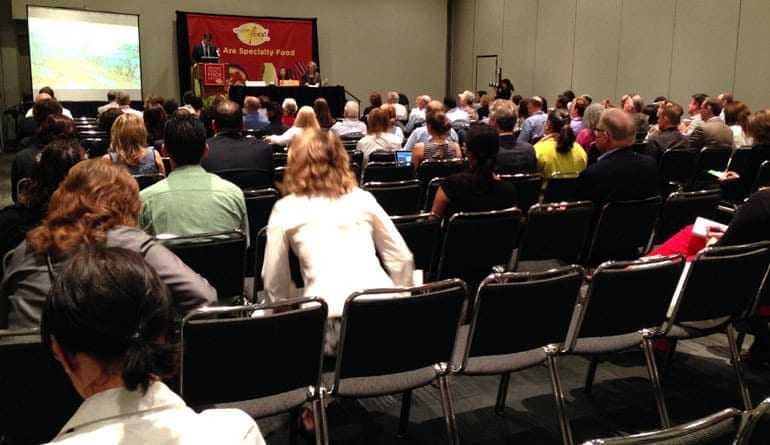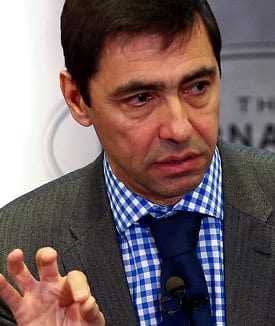
These are challenging times for olive oil producers. Prices are low, stocks are high, and imports are slipping in every major market.
Here in the world’s largest market, per capita consumption hasn’t budged in years, despite all the compelling reasons Americans should be using more olive oil and less other fats.
Not much has been done here to help the situation, while plenty has made it worse.
Yesterday, I attended a seminar at the Fancy Food Show in New York, where the International Olive Council wasted yet another opportunity to do something that mattered.
It was an impressive turnout, though it was hard to tell who was there to be enlightened about one of the world’s most important foods and who was lured there first thing in the morning by the raffle for an iPad and free doughnuts.

IOC director Jean-Louis Barjol began by warning that, having allotted himself just 45 minutes, he would need to move along quickly.
But 45 minutes is plenty of time to make a compelling case for olive oil — to draw us in with images that speak of its rich culture, highlight its advantages in the simplest terms, and provide powerful talking points to trickle down through those of us attending to a broad audience on the busy trade show floor and beyond.
But Barjol is no pitchman.
Before joining the global governing body for Liquid Gold, Barjol represented sugar manufacturers, and the seminar in the Javits Center basement was an uninspired report on just another commodity, somehow delivered in a French-accented monotone (an achievement I suppose in its own right).
After a rehashed presentation with a few dozen slides full of graphs, consumption statistics and standards benchmarks, the first question from an audience member was where he could find an olive oil martini. My sentiments exactly.
But just like the Lincoln Center kickoff of the only IOC campaign here in the Internet Age (what, you don’t remember seeing the “Add Some Life” campaign? The one with 342 million “impressions” that somehow missed us all?) this was another blown opportunity to deliver solid and straightforward messages about olive oil. Why use it? How to use it.
That campaign had a budget of $1.7 million (for which we got a guy named Ryan Goodspeed and a blog).
Of course, everyone knows the IOC is broke as it undergoes a period of self-reflection in its bid for a life-sustaining charter. But here’s what I would do if I were Barjol (should he be given another chance after his term ends in December):
I’d ask member countries to approve a call for tenders for an olive oil pitchman (or woman). Preferably a highly charismatic chef who has taken the time to know olive oil (you’d be surprised how few chefs do), he will tour the world all year delivering precise, memorable performances to audiences everywhere: Why to use olive oil. How to use olive oil. An olive oil world tour.
I met a chef some years ago in Córdoba who would make a good candidate. The well-known restaurateur Paul Bartolotta had pulled himself away from building his culinary empire to join the campaign for olive oil quality and education.
Bartolotta held the audience at the “Beyond Extra Virgin” conference spellbound with his straight talk and no-nonsense delivery, peppered with anecdotes from his Midwestern upbringing. I told him at the time he’d make a good pitchman for olive oil, and he said he’d be very interested. I mentioned the discussion to Barjol soon after.

Paul Bartolotta
Who knows, things might have turned out differently.
One person. An olive oil front man, not to talk about standards, fraud and export trends, but about history and tradition, simple health benefits and making the perfect egg with extra virgin olive oil.
Know anyone who’d be good for the job?








